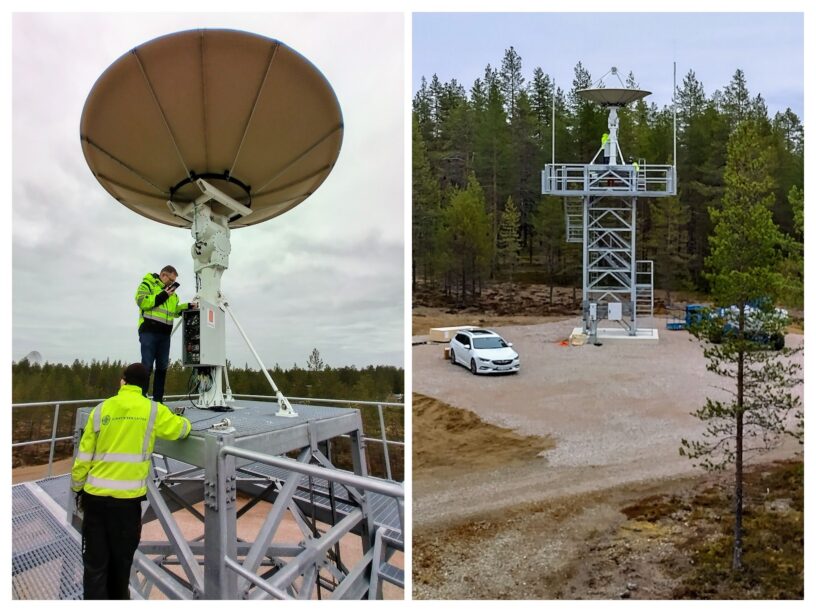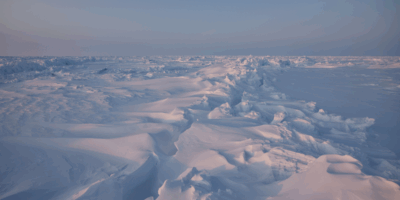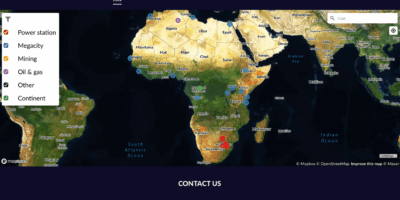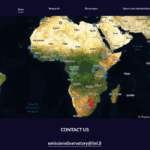The Sodankylä’s new SOD04 satellite data reception system equipped with a parabolic antenna dish (diameter of 3.7 m) improves the operational capability of the Arctic Space Centre to deliver satellite data for meteorology and environmental awareness applications.
In addition to the new system, the current satellite ground segment facility at Sodankylä incorporates two high-data-rate systems with 7.3 m antennas for the reception of data transmissions from polar orbiting satellites. During 2022, SOD04 operating at the L- and X-bands will be followed by an identical SOD05 antenna to provide redundancy, reliability and additional capacity.
The new 3.7 m L-/X-band satellite dish (SOD04) has been installed in Sodankylä Arctic Space Centre (FMI-ARC) of the Finnish Meteorological Institute. The purpose of the new SOD04 satellite dish is to replace the previous SOD01 antenna in Direct Readout (DR) data reception.
Data reception from polar orbiting EO satellites using SOD01 satellite dish has included
- NASA EOS Aura, Aqua and Terra
- NOAA-20 and Suomi-NPP
Data reception using the new SOD04 satellite dish currently incorporates
- NASA EOS Aura, Aqua and Terra
- NOAA-20 and Suomi-NPP
- EUMETSAT MetOp-B and MetOp-C
In addition, data reception from other satellites is possible, so Sodankylä facility is prepared to receive data from new weather satellite missions, such as EUMETSAT (Meteorological Operational Satellite – Second Generation) MetOp-SG.
OMI (The Ozone Monitoring Instrument) onboard NASA’s Earth Observing System (EOS) Aura, and OMPS (The advanced Ozone Mapping and Profiler Suite) instruments onboard NOAA-20 and Suomi-NPP are utilized in monitoring and measurement of the composition of the atmosphere, see: https://sampo.fmi.fi.
MODIS (Moderate Resolution Imaging Spectroradiometer) instrument onboard NASA’s Earth Observing System (EOS) satellites Terra and Aqua, and VIIRS (Visible Infrared Imaging Radiometer Suite) instrument onboard NOAA-20 and Suomi-NPP are utilized e.g. in detecting forest fires.
More information
Head of Arctic Space Centre, Jyri Heilimo, Finnish Meteorological Institute, jyri.heilimo@fmi.fi
National Satellite Data Centre (NSDC), Timo Ryyppö, Finnish Meteorological Institute, timo.ryyppo@fmi.fi








Leave a Reply
You must be logged in to post a comment.